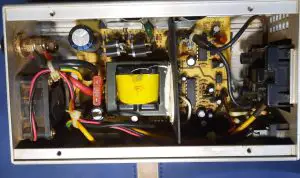Owning an inverter can be a worthwhile – one that provides you with many years of reliable backup power whether you are out on a boat, camper or at home.
Unfortunately, this inverter can easily fail if you do not avoid the common mistakes that users make when installing and using them.
In this post, I share the common causes of inverter failure and tips to prevent them saving you the hassle costs of shipping faulty equipment and pursuits of warranty claims.
1. Accidentally reversing the polarity of inverter cables to the battery
DC – AC power Inverters have battery cables as follows: The red color wire that is connected to the positive terminal
of the battery and the black color wire which is connected to the negative of the battery.
If you interchange the connections, you may end up damaging your inverter. Fortunately, most newer inverters have reverse polarity protection which protects the inverter from damage when the battery wires are mistakenly interchanged.
You can prevent this by:
- Purchasing an inverter with reverse polarity protection.
- Always check your inverter battery connections to ensure that the red color wire is connected to the positive terminal of the battery and the black color wire is connected to the negative terminal of the battery before switching it ON.
2. Connecting appliances whose power consumption exceeds what it can handle
You risk damaging your inverter if you connect an appliance whose:
- power rating exceeds the maximum power rating of the inverter
- surge power rating exceeds the surge power rating of the inverter.

Good quality inverters can shutdown when the detect an overload preventing damage. However an inverter is repeatedly overloaded and especially for a poor quality inverters, there is a higher risk of damage.
Inverters rated over 2,000 W can generally power most common household appliances without a problem with the exception of the heating
appliances. Should you have an inverter rated 700W or below, check that the connected appliances’ surge and continuous power rating does not exceed that of the inverter.
Short-circuits
Avoid plugging any appliance that you suspect to be faulty. Inverters should be mounted in places free of small metallic objects such as screws, wires which can accidentally fall into the inverter causing a short-circuit of its internal circuity.
3. Installing inverters in unsuitable environments
Always install your inverter in a place where there is free flow of air to keep it cool. Poorly ventilated areas easily result in heat build up in the inverter which may cause a thermal shutdown as a protection mechanism or cause a failure altogether.
Do not install inverters in areas that have high moisture, mist, sprays (unless the inverter is built for that environment). The moist environment can damage the inverter’s internal circuitry.
4. Exceeding the inverter’s recommended supply voltage
Is your inverter built for 12V? Do not accidentally connect it to 24V! Connecting the inverter to higher than recommended voltages can cause damage to its internal circuity.
Always confirm and connect the inverter to its recommended supply voltage to prevent damage.
5. Poor quality inverters
Some inverter brands are just plain unreliable. You should therefore purchase a poor quality inverter at your own risk.
Before buying an inverter, check there is a high rating of genuine user reviews. In particular, note the supplier’s reputation for honoring warranties before you make a purchase.
In summary, it is possible to prevent damage to your inverter by following a few simple yet commonly ignored tips namely:
- checking that you are connecting the inverter battery cables to the correct corresponding positive and negative battery terminals,
- only plugging appliances whose power consumption does not exceed that of the inverter’s power rating
- installing the inverter is a well ventilated area with low humidity
and lastly supplying the inverter with the recommended supply voltage.
Related Topics
Why is my inverter tripping
Why is my inverter making noise
Buying guide for inverters
How to estimate your battery’s runtime with different appliances
